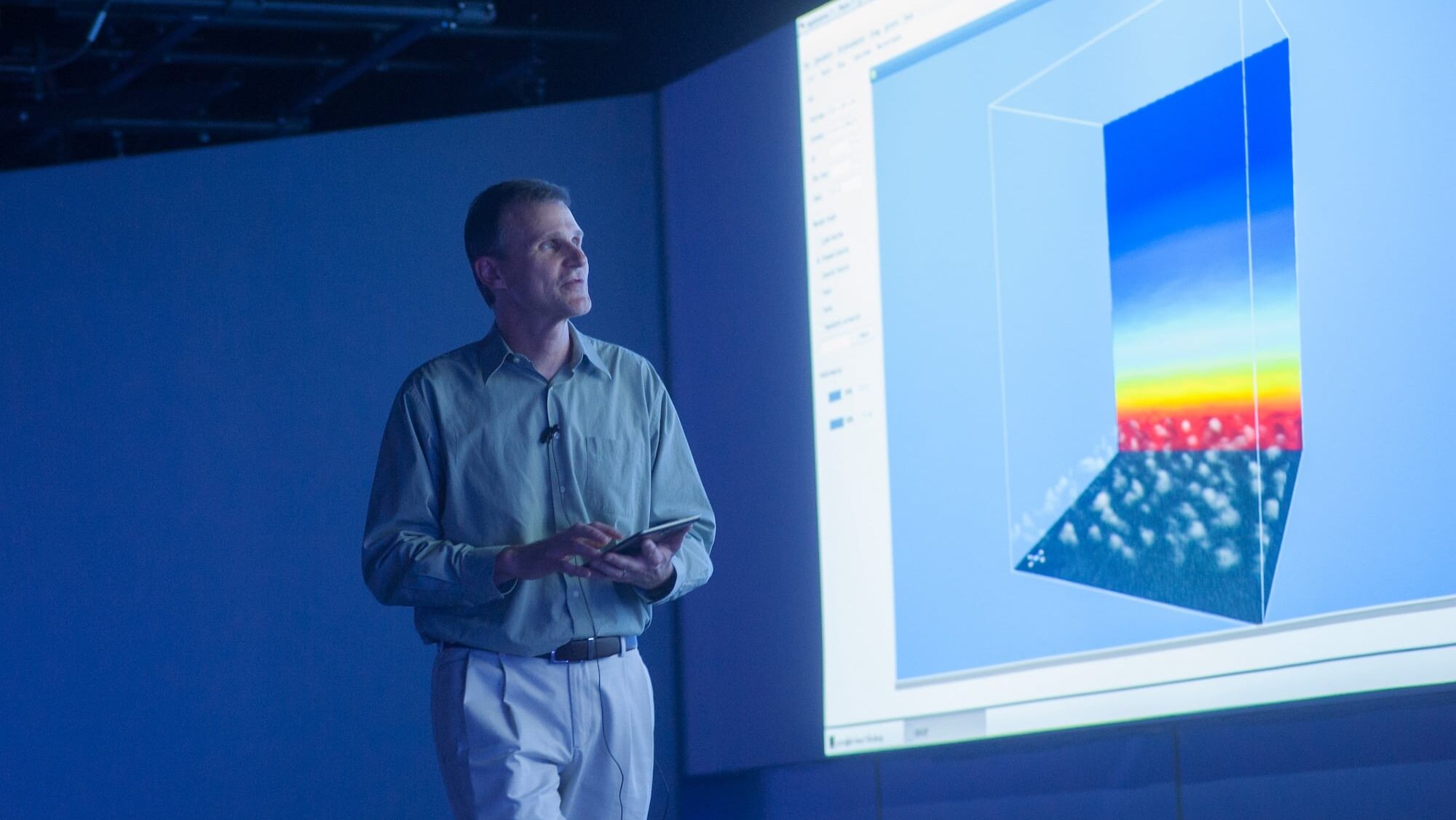Nonequilibrium Physics Explained: 5 Questions With Lex Kemper

Lex Kemper is an assistant professor of physics at NC State. He is interested in a new method of probing complicated and poorly understood materials, like superconductors, in order to find out what makes them behave the way they do. He sat down with The Abstract to talk about this technique and its potential.
The Abstract: What are non-equilibrium physics?
Kemper: A lot of the time, physicists studying complex materials do so by looking at them as they’re sitting there, for example by looking at them with varying colors and types of light. This has provided understanding of physics underlying all aspects of nature for as long as science has been around, but in particular since the days of Newton, when we learned how to separate light into colors. When the material is sitting there, it’s in a state known as an “equilibrium” state, where all the pieces are happy where they are. They may wiggle a little bit, but that’s about it. Non-equilibrium physics is what you get when you take it away from this state, and using a variety of methods drive it out of its equilibrium into a state that it doesn’t normally find itself in – kind of like hitting a bell to make it ring. And, like with hitting the bell and getting something new – in this case, a sound – you can learn something about other materials when you perturb them.
The Abstract: What is the “pump-probe” technique? How does it help us learn about complex materials?
Kemper: Following up on the above example of the bell, the pump is the hammer you use to hit the bell, and the probe is your ears that hear the sound after you hit it. For studying materials, we can’t really use regular hammers and ears – instead, we use ultrafast laser pulses. These are so short that in the time the laser pulse exists, light only moves the distance equivalent to the width of a hair, REALLY short. This is necessary because that is how fast electrons and atoms move inside a material, and to be able to see them, we have to use these super short light pulses to slow them down to the point we can see them. Then, by looking at the resulting movie, we can study the electrons and how they move, and learn about their interactions.
The Abstract: What can we learn about a material by looking at how its electrons and atoms interact?
Kemper: How the electrons and atoms interact in a material determine what the material does. Whether it’s an insulator, whether it transmits or absorbs light, whether it’s magnetic in interesting ways, or whether it produces some kind of weird new physics – it’s all about how the electrons and atoms interact. For a lot of materials, we don’t know why they exhibit their interesting properties. Looking at how the pieces that make up the material interact can teach us why the material does what it does, and teach us about fundamental physics with materials as a playground. The next logical step is to then take our newfound knowledge and use this to develop the material for uses in the future.
The Abstract: What is the most interesting thing you’ve discovered so far by using the pump-probe technique?
Kemper: Since it’s a newer technique, we’re really still busy trying to figure out what it’s best used for. One of the more recent exciting things is that we have found that the pump-probe technique can be used to distinguish the various things going on inside a material that are normally mixed up. The electrons in the material bounce off of themselves, some of the atoms, and sound waves, which is called scattering. In normal experiments it’s very hard to tell these different interactions – electron-electron, electron-atom, etc. – apart, because they all contribute to the electrons scattering. What we were able to show was that in the non-equilibrium experiments, the different kinds of scattering look different, and some of them don’t even show up at all. This allows us to tell these different scattering types apart, which is valuable for learning about materials.
The Abstract: What material do you want to study next?
Kemper: I am interested in materials that can be used for solar light harvesting purposes, because they have interesting objects inside them called excitons. These are like an electron and an anti-electron that are circling around each other but can’t get away. Excitons are interesting by themselves, but in addition, it’s essentially unknown what they’ll do if you perturb them away from their equilibrium state. This is a new exciting area with a lot of open questions, and we may even learn something about how to make a better solar cell.
This post was originally published in NC State News.
- Categories:


